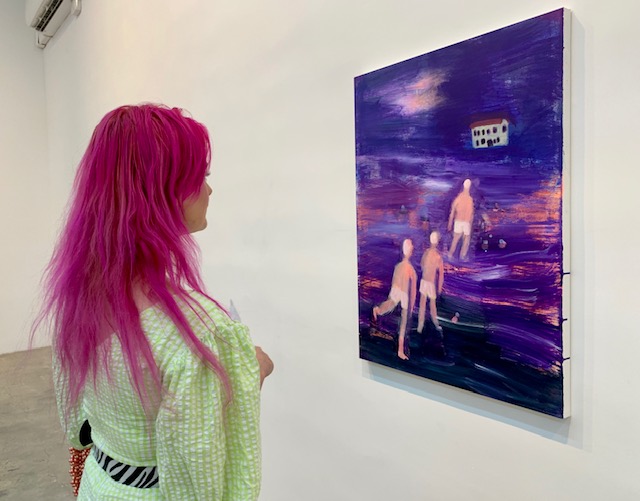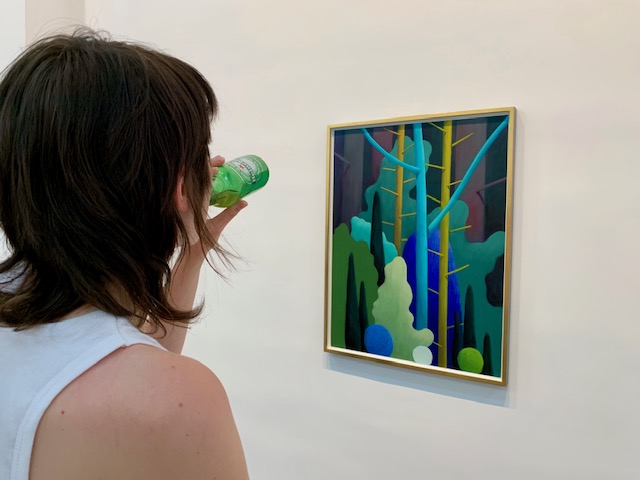Video of the opening night for the group show “Away in the Hill” at GRIMM Gallery.





PR: RIMM is pleased to announce Away in the Hill, a group exhibition with works by Charles Avery (b. 1973 in Oban, UK), Jules de Balincourt (b. 1972 in Paris, FR), Katherine Bradford (b. 1942 in New York, US), Peter Doig (b. 1959 in Edinburgh, UK), Alex Dordoy (b. 1985 in Newcastle, UK), Loie Hollowell (b. 1983 in Woodland, US), Matthew Day Jackson (b. 1974 in Panorama City, US), Claudia Martínez Garay (b. 1983 in Ayacucho, PE), Benny Merris (b. 1978 in Boise, US), William Monk (b. 1977 in Kingston upon Thames, UK), Ciarán Murphy (b. 1978 in Mayo, IE), Rosalind Nashashibi (b. 1973 in Croydon, UK), Nicolas Party (b. 1980 in Lausanne, CH), Lucy Skaer (b. 1975 in Cambridge, UK), Letha Wilson (b. 1976 in Honolulu, US), Matthias Weischer (b. 1973 in Elte, DE) and Matthew Wong (b. 1984 in Toronto, CA).
Away in the Hill, finds its origin in Alastair Mackintosh’s (b. 1955 in Doncaster, UK) book ‘Soil and Soul’, an exploration of our roots and relationship with place, land and nature. The book itself is about the interrelationships between natural ecology, social community and the human spirit. It discusses the concept of the GalGael, which comes from the intermingling of 9th century Norsemen and the Gaels- in old Gaelic, gall meant ‘foreigner or stranger’ and gael meant ‘native’ – with this term, there is a sense of being two but not two, of merging the traditional with the new.
The exhibition takes its title, Away in the Hill, from a saying that comes from the Outer Hebrides (Isle of Uist) in Scotland and means ‘to imagine’. The ‘Hill’ is the potentially super-conscious realm of what is normally unconscious, what has either been buried away or has never yet come fully into being. Works in Away in the Hillexplore the emotional and physical space between fiction and fact, representation and abstraction. Through a variety of mediums, but with a distinct focus on landscape painting, works in the exhibition reproduce the world that we live in by means of the artists’ own psychological landscapes, as well as photography, and cartographical representation.
In the 19th century, when landscape painting was at the height of its popularity in Western Europe and North America, three aesthetic categories were advanced: the pastoral, the picturesque and the sublime. Whereas the pastoral and picturesque reference mankind’s ability to control the natural world, the sublime is a humbling reminder that humanity is not all-powerful. During this era the desire for contemplation of nature and the belief that it was a spiritually enriching practice produced a variety of styles, which remain influential to contemporary artists working today. At present, the way people relate to the land and its representation as landscape, cannot be separated from an awareness of climate change and connected social issues. The former aesthetic categories of landscape painting have been superseded by a collection of varied and variable perspectives as well as the reclamation of earlier styles, contributing to a widening dialogue on our relationship to nature.
Away in the Hill
27 June – 2 August 2019
202 Bowery, New York
Writing via Press Release
